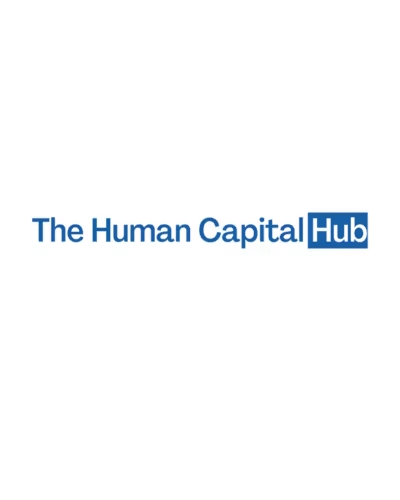Modern businesses face the daunting task of managing vast amounts of data generated from various sources, yet doing it effectively remains a daunting challenge for large organizations that must integrate and use this information for strategic decision-making. Enter data fabric. This blog post will explore its importance for data integration across enterprises as well as why heavy-duty enterprises increasingly rely on this solution to enhance their data management strategies.
By the time this article concludes, you will have gained an understanding of the fundamental components and benefits of data fabric for large organizations, as well as practical applications that can lead to more efficient data integration.
Understanding Data Fabric
For those wondering what is data fabric, it is an architectural framework created to enable seamless data integration and management across various systems and platforms. While traditional data integration solutions often come with high costs and complex configurations, data fabric offers an agile and flexible alternative for managing enterprise data.
At its core, data fabric utilizes an innovative architecture that enables organizations to connect disparate data sources on-premises, in the cloud, or at the edge. This interconnectivity provides real-time access for diverse departments and stakeholders while meeting real-time reporting needs.
Data fabric's emphasis on metadata management is one of its hallmark features, offering organizations deeper insight into their data assets while improving governance and compliance processes. Furthermore, using metadata helps organizations increase quality while decreasing errors or inefficiency in decision-making processes.
Importance of Data Integration for Large Enterprises
Data integration presents large enterprises with unique challenges. Their operations often span multiple locations and systems, making achieving a comprehensive data view quite challenging. Data integration facilitates consolidation from various sources for organizations to gain actionable insight from large datasets.
Large enterprises recognize that an effective data integration strategy isn't just a luxury. It's essential. Integrating information from various departments, such as finance, marketing, and operations, can result in improved collaboration, streamlined workflows, and alignment with business objectives. Finally, effective data integration enables organizations to respond rapidly to market changes while making informed strategic decisions.
Data integration can transform customer experiences. By consolidating customer data from different touchpoints, companies can gain a comprehensive view of their clients for targeted marketing strategies and personalized services. Consumers today expect tailored experiences. Thus, integrating data across departments is key to remaining competitive.
Key Features of Fabric Data Storage Solutions
Data fabric's key advantage lies in its support of virtualization technology, enabling organizations to access and analyze data without physically moving it. This reduces the administrative overhead associated with traditional data integration methods and improves decision-making abilities. By taking advantage of virtualization, enterprises gain real-time access to their information for enhanced decision-making capabilities.
Scalability is another essential feature of data fabric solutions. As large enterprises continue to expand, their data management needs will only become greater. An effective data fabric solution will expand with your organization while remaining efficient at data integration, no matter the volume.
Advantages of Implementing Data Fabric in Enterprises
Organizations that invest in data fabric reap numerous advantages that improve their data integration capabilities, most notably improved data accessibility. By making information readily accessible across platforms and applications, data fabric allows employees to easily gain access to what they require without unnecessary delays.
Additionally, data fabric fosters improved collaboration across teams. By breaking down silos and providing a centralized view of data, different departments can work more efficiently together. This collaborative environment encourages innovation while sharing of insights that lead to enhanced business results.
Applications of Data Fabric
Businesses can leverage data fabric in various ways to improve operations and drive value creation. Integrating data fabric with existing customer relationship management (CRM) systems can provide businesses with improved customer insights by consolidating interactions across multiple channels. This creates more complete profiles of their clients that allow for more targeted engagement strategies.
Data fabric also offers benefits in supply chain management. Organizations can gain greater insight into their operations by integrating data from suppliers, logistics systems, and inventory systems into enterprise supply chains. This gives them more time and flexibility to proactively address disruptions or optimize inventory levels for maximum efficiency.
Challenges
Data Fabric provides many benefits to organizations. However, its implementation may pose challenges. Resistance to change may prevent employees accustomed to traditional data integration methods from adopting new technologies and processes easily. Therefore, it is vital for enterprises to offer adequate training and support services during this transition phase to demonstrate its value and show off all that data fabric offers.
Integration complexity can also present a difficulty. Integrating data fabric with existing systems may require careful planning and execution to prevent disruptions, so organizations should work with experienced consultants for an easy transition and integration process.
Future Trends in Data Fabric
One trend to watch out for is an increasing focus on automation in business processes and data fabric solutions, where more automated capabilities may help businesses increase efficiency while decreasing errors. Businesses have increasingly turned to automation tools in order to streamline data processes and minimize manual intervention, making data fabric solutions increasingly automated to enhance efficiency and minimize human intervention errors.
Real-time data processing will have an enormous effect on data fabric. Organizations increasingly demand immediate access to their data for agile decision-making, leading to advances in technologies supporting real-time integration and analytics. Fabric must respond accordingly to remain relevant within an ever-evolving data landscape.
Real-World Case Studies of Data Fabric Implementation
Investigating real-world case studies is an effective way of understanding how data fabric functions within enterprises. A notable example is a leading financial services firm that implemented a data fabric solution to strengthen its risk management processes by integrating market and transaction records from various sources into one database solution, thus improving risk assessment capabilities and increasing decision-making capacity with greater regulatory compliance.
One example involves a multinational retail corporation that leveraged data fabric to optimize its supply chain operations. By consolidating data from suppliers, logistics partners, and inventory systems into one consolidated source of supply information, they gained greater insight into their supply chain, allowing them to reduce costs, accelerate delivery times, and ultimately improve customer satisfaction.
These examples demonstrate the power of data fabric to transform data integration across heavy-duty enterprises, leading to improved business outcomes and competitive advantages.



